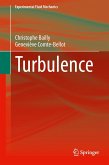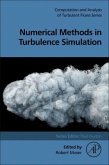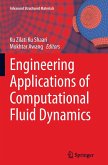The emphasis of this book is on engineering aspects of fluid turbulence. The book explains for example how to tackle turbulence in industrial applications. It is useful to several disciplines, such as, mechanical, civil, chemical, aerospace engineers and also to professors, researchers, beginners, under graduates and post graduates.The following issues are emphasized in the book:- Modeling and computations of engineering flows: The author discusses in detail the quantities of interest for engineering turbulent flows and how to select an appropriate turbulence model; Also, a treatment of the selection of appropriate boundary conditions for the CFD simulations is given.- Modeling of turbulent convective heat transfer: This is encountered in several practical situations. It basically needs discussion on issues of treatment of walls and turbulent heat fluxes.- Modeling of buoyancy driven flows, for example, smoke issuing from chimney, pollutant discharge into water bodies, etc
From the reviews:
"This book is a brief summary of the basic equations and guidelines governing turbulent flow of Newtonian fluids. ... The author presents the basic equations describing various turbulent models, such as Reynolds averaging, Boussinesq, k-epsilon, Reynolds stress and scalar flux ... . Each chapter concludes with a brief list of references. The presentation is concise and readable, and the book is helpful as an introduction to the various turbulent-flow modeling methods that are in use today. Summing Up: Recommended. Graduate students and above." (R. Darby, Choice, Vol. 48 (10), June, 2011)
"This book is a brief summary of the basic equations and guidelines governing turbulent flow of Newtonian fluids. ... The author presents the basic equations describing various turbulent models, such as Reynolds averaging, Boussinesq, k-epsilon, Reynolds stress and scalar flux ... . Each chapter concludes with a brief list of references. The presentation is concise and readable, and the book is helpful as an introduction to the various turbulent-flow modeling methods that are in use today. Summing Up: Recommended. Graduate students and above." (R. Darby, Choice, Vol. 48 (10), June, 2011)









